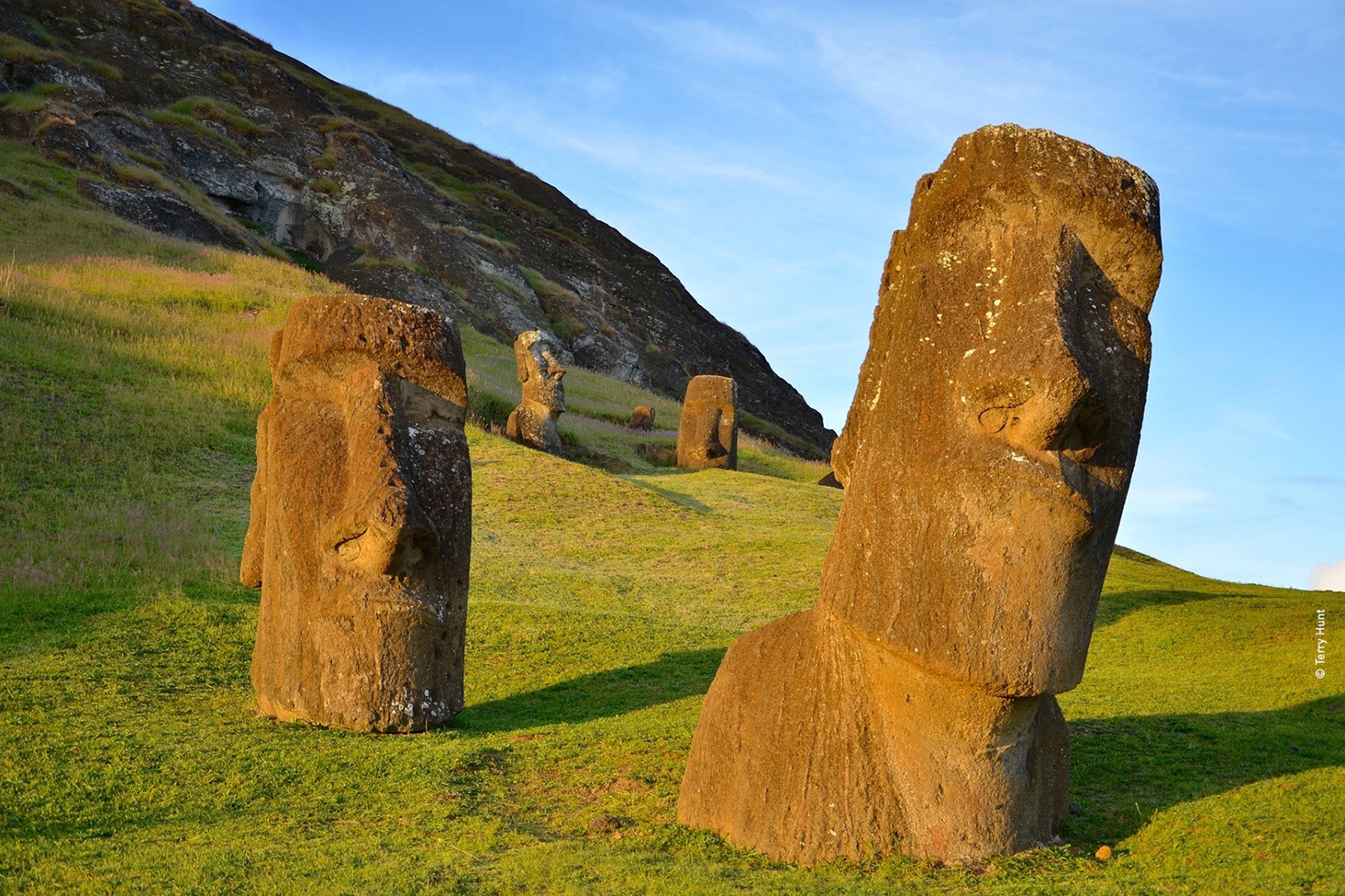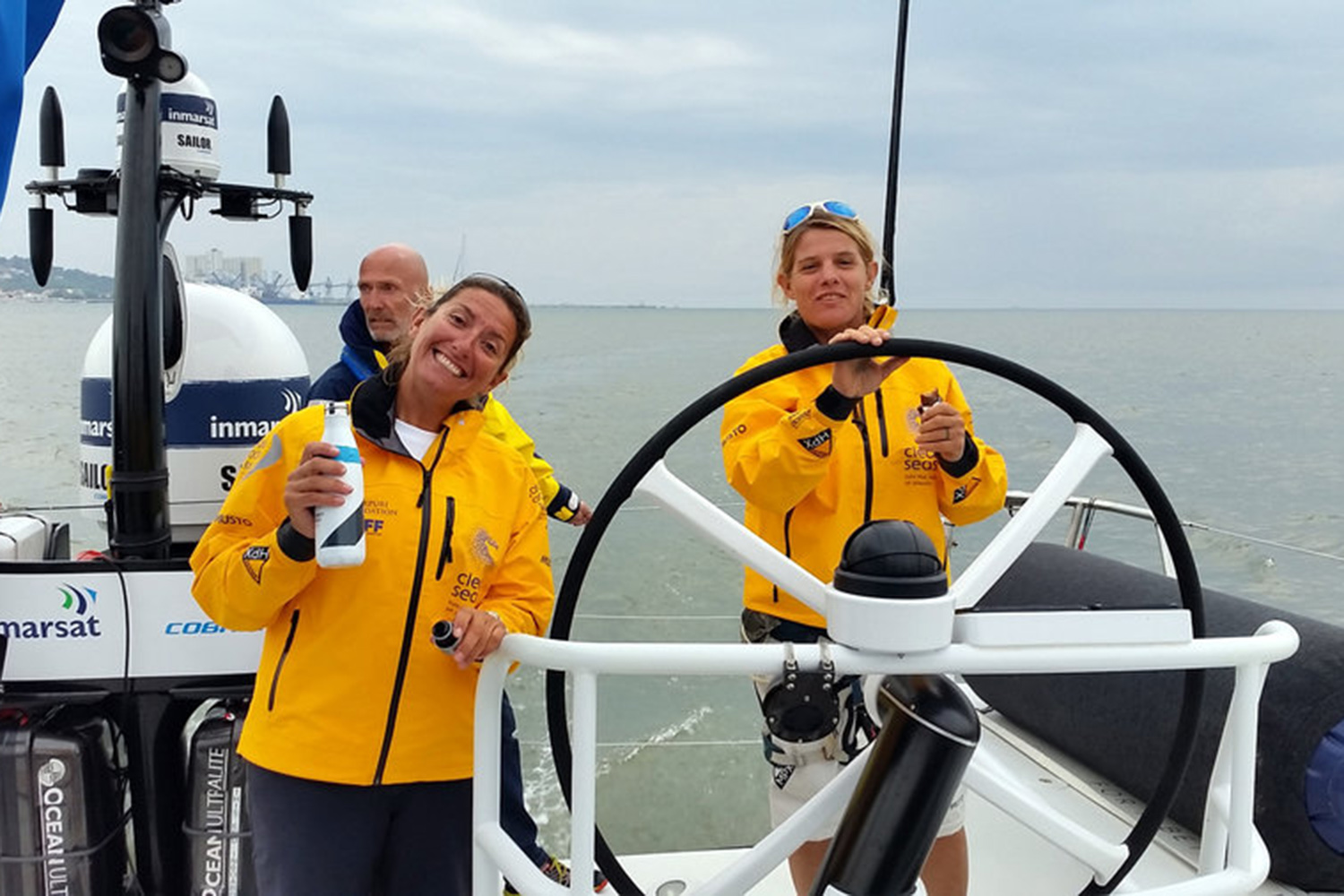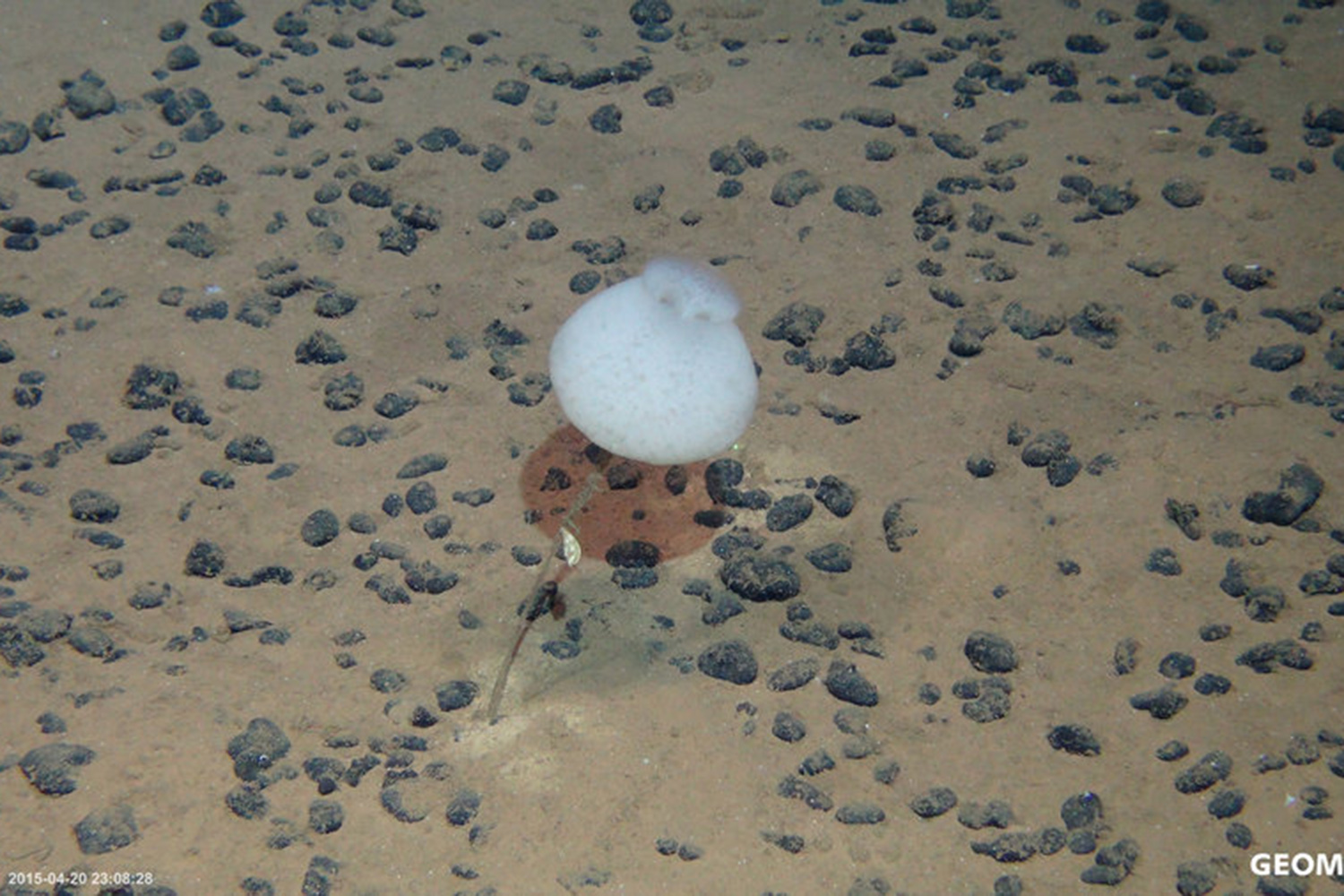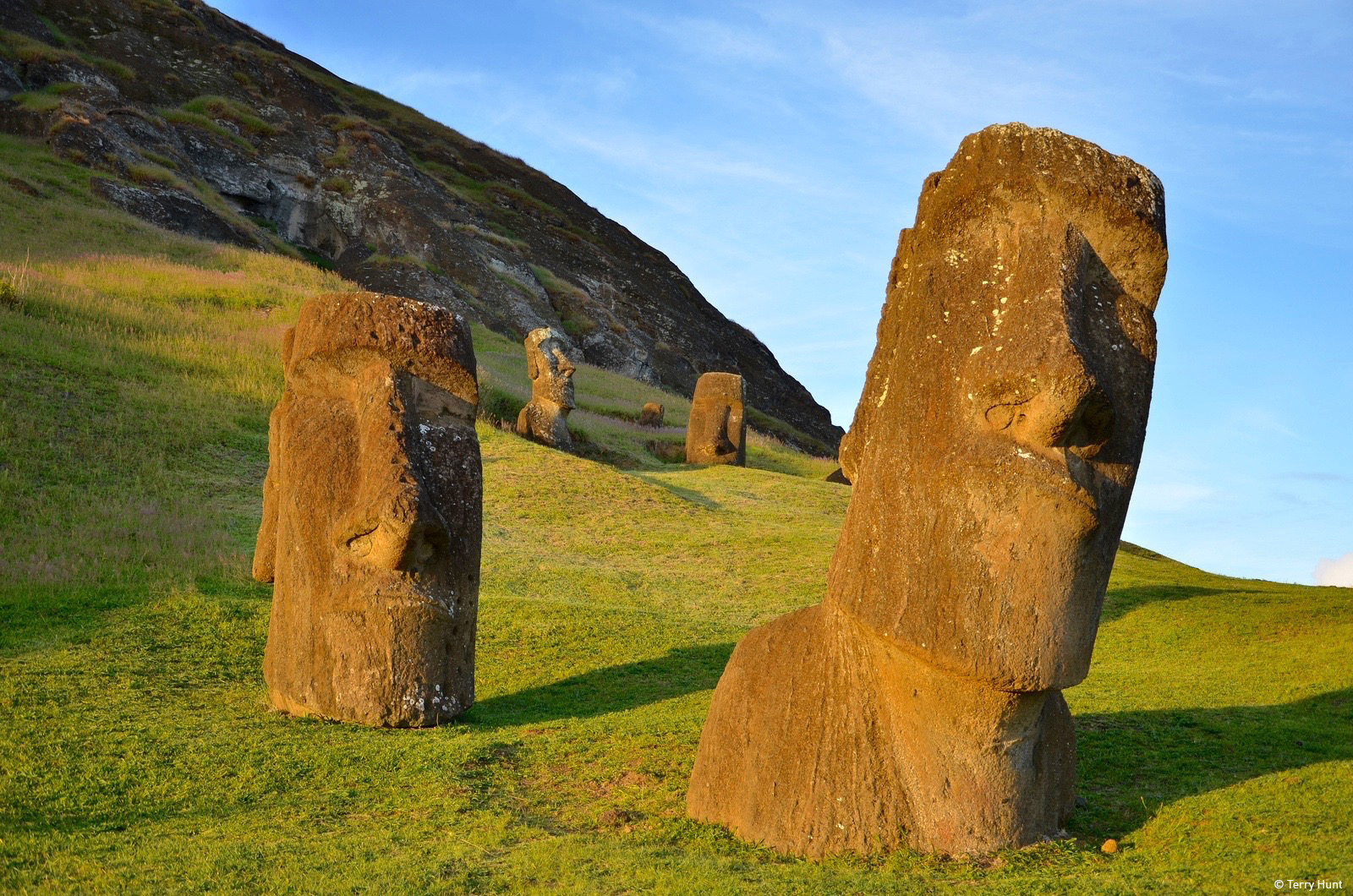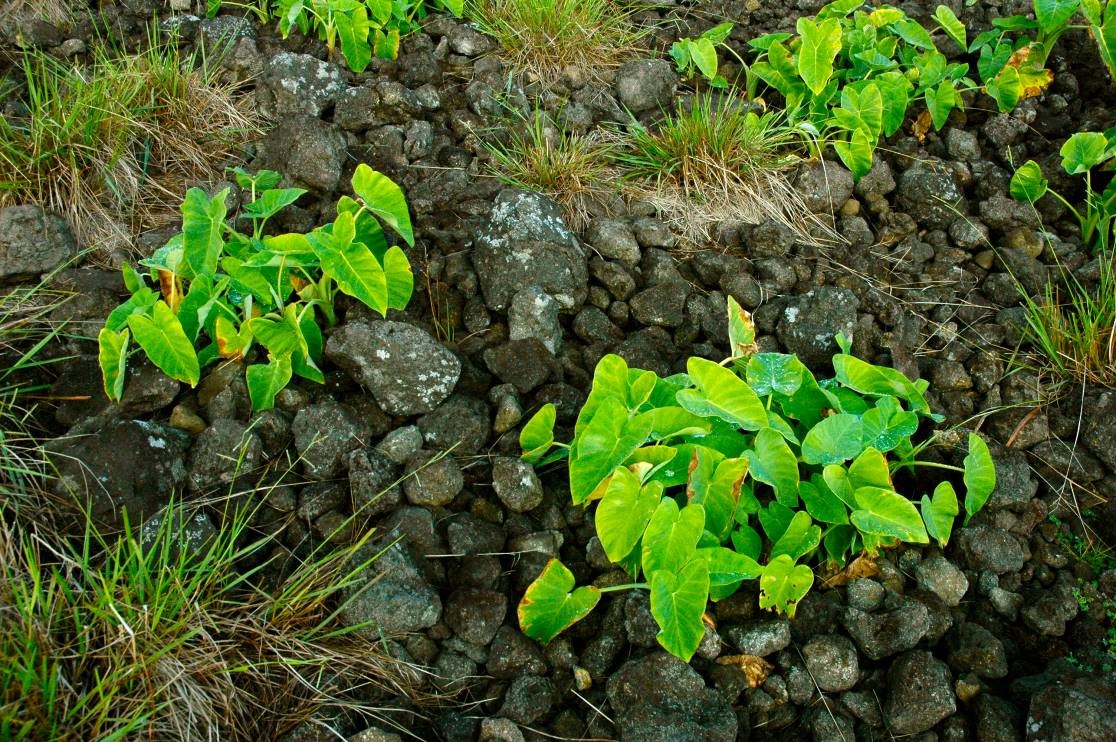Consistent with this storyline, previous studies of the diet of the ancient Rapa Nui people concluded that seafood was infrequently consumed. This new study challenges that interpretation and instead shows that the ancient population ate roughly equal amounts of seafood and terrestrial resources. "We also discovered that agricultural crops consumed must have been planted in soils that were deliberately managed and manipulated to provide better yields," said Catrine Jarman, lead author of the study and graduate student at the University of Bristol. "Previous work has shown that plants of Rapa Nui were grown in rock mulch gardens and planting enclosures known as manavai. These had been carefully constructed and deliberately managed, and our study showed that the islanders may have added fertilizers."
The research team analyzed archaeological material dating from 1400AD to the historic period from the Kon Tiki Museum in Oslo, Norway. These included some material from excavations lead by the famous Norwegian explorer and anthropologist Thor Heyerdahl in the 1950s and 1980s. Other samples were provided by Terry Hunt at University of Oregon and Carl Lipo at Binghampton University that were collected as part of University of Hawai'i archaeological field schools.
In Brian Popp's laboratory at the University of Hawai'i at Mānoa (UHM) and in the Leibniz Laboratory for Radiometric Dating and Stable Isotope Research at the Christian-Albrechts University of Kiel, Germany, the team analyzed the stable isotope ratios of carbon and nitrogen in archaeological soils, human and animal bone and plant remains from around 1400 AD, and modern soil and plant samples from the island.
"Human and animal bone retain isotopic ratios that reflect a consumer's diet in life," said Popp, a geology professor at the UHM School of Ocean and Earth Science and Technology (SOEST). "By studying these isotope ratios, particularly in individual amino acids, we estimated the relative proportions of different food sources in each individual's diet."
"We used three independent lines of isotopic evidence to determine what the ancient Rapa Nui people ate," said Thomas Larsen of Kiel University. "Although we cannot say that no rats were eaten, all our results indicate that seafood was an important part of the Rapa Nui diet." Finding that the Rapa Nui islanders consumed more fish than what was previously thought was not a real surprise for Jarman and her colleagues. What was surprising, however, was the evidence suggesting extensive manipulation of agricultural crops. The ecocide hypothesis, though controversial, is commonly used as the archetypal parable of the dangers of environmental destruction. Understanding how past populations managed their limited resources for subsistence purposes is crucial to this debate, but empirical evidence of their diets is sparse.
Contrary to notions of 'ecocide,' the new results suggest that the ancient population adapted to the harsh environmental conditions by managing their gardens and manipulating soils for better crops. This means that they exhibited astute environmental awareness and stewardship to overcome nutrient poor soils. "This research highlights the unique and varied environmental adaptations that Pacific Islanders have shown through time," said Jarman. "Polynesians developed sustainable economies in ways that we are now better understanding through interdisciplinary research. Lessons from the past and from traditional island societies have value and relevance today." In the future, this research may be expanded to further understand the adaptation and environmental management strategies of other Polynesian Islands including Hawai'i.
Original Work
Jarman CL, Larsen T, Hunt T, et al. Diet of the prehistoric population of Rapa Nui (Easter Island, Chile) shows environmental adaptation and resilience. Am J Phys Anthropol. 2017;00:000–000. https://doi.org/10.1002/ajpa.23273
Research Highlight in Nature The resourcefulness of the Rapa Nui people
This research was largely funded by a National Science Foundation grant through a unique graduate student Research in Residence program offered through the Inter-university Training for Continental-scale Ecology (ITCE) program at the University of Utah. In addition to offering specialized courses, the ITCE funded Catrine Jarman's Research-in-Residence at the University of Hawai'i allowing her to gain access to new ideas, skills and data through collaborative work with Popp, an ITCE course faculty member. Funding was also obtained through a research grant to Jarman from the Kon-Tiki Museum. Thomas Larsen was funded by the Cluster of Excellence 80 "The Future Ocean". The "Future Ocean" is funded within the framework of the Excellence Initiative by the Deutsche Forschungsgemeinschaft (DFG) on behalf of the German federal and state governments."
Contact
Dr. Thomas Larsen
Christian-Albrechts-Universität zu Kiel (CAU)
Leibniz-Labor für Altersbestimmung und Isotopenforschung
tl@leibniz.uni-kiel.de, Telefon 0431-829-3691
…
Press material
New isotopic analyses of bones, soils and plant remains from Rapa Nui, Chile (Easter Island) provide evidence contrary to the widely-held belief that the ancient civilization recklessly destroyed its environment.
Photo Credit; Terry Hunt
